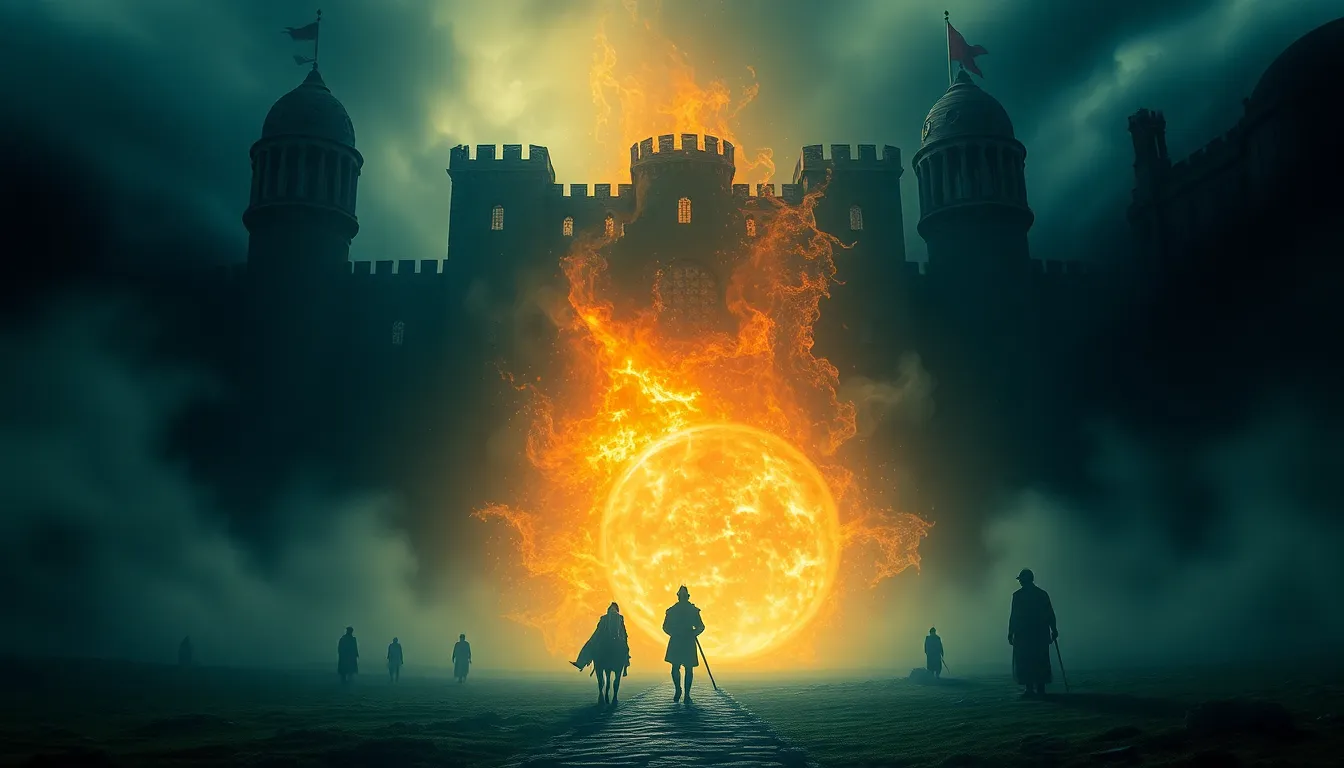The Enigmatic Kingdom of the Dreamweavers: Myths of Imagination
I. Introduction to the Kingdom of the Dreamweavers
The Dreamweavers are mystical figures that inhabit the rich tapestry of mythology, representing the transformative power of imagination and dreams. They are often depicted as ethereal beings who weave the fabric of dreams, shaping human experiences through the lens of creativity and wonder.
Across various cultures, the concept of imagination holds paramount significance. From ancient civilizations to modern societies, imagination has been seen as a bridge to the divine, an avenue for personal expression, and a powerful tool for cultural storytelling. This article aims to delve into the myths and stories that surround the Dreamweavers, exploring their origins, roles, and relevance in both historical and contemporary contexts.
II. Historical Origins of the Dreamweavers
Dreams have fascinated humanity since time immemorial, with ancient civilizations attributing great importance to their interpretations. Early Egyptians, for instance, viewed dreams as messages from the gods, while the Greeks considered them prophetic visions. The emergence of the Dreamweavers in folklore can be traced back to these early interpretations of dreams.
In many cultures, the Dreamweavers are akin to mythological figures such as Morpheus from Greek mythology, who is known as the god of dreams. This comparative analysis reveals how various cultures have personified the act of dreaming, yet each interpretation retains unique characteristics:
- Morpheus: Greek god who shapes and forms dreams.
- Oneiroi: The personifications of dreams in Greek mythology.
- Yume: Japanese spirits that influence dreams.
III. The Role of Imagination in Human Experience
Imagination is a fundamental aspect of human existence, allowing individuals to transcend reality and explore the realms of possibility. Psychologically, imagination is intertwined with dreaming, serving as a canvas for our thoughts, fears, and desires. Renowned psychologist Carl Jung suggested that dreams are a manifestation of our unconscious mind, rich with symbolism and meaning.
The connection between dreams and creativity is profound. Many artists, writers, and inventors have cited dreams as a source of inspiration, igniting their creative processes. This illustrates how imagination shapes cultural narratives and myths, as stories often emerge from the depths of our subconscious, reflecting universal themes and archetypes.
IV. Key Myths and Legends of the Dreamweavers
Various cultures boast a multitude of stories featuring the Dreamweavers, each with its own unique flavor and moral lessons. Here are some notable examples:
- The Dreaming of the Aboriginal Australians: A rich narrative encompassing creation stories and ancestral beings that shape the world through dreams.
- Morfeo’s Gift: A tale from Greek mythology where Morpheus grants mortals the ability to shape their dreams, leading to both enlightenment and chaos.
- The Sandman: A figure in Western folklore who sprinkles sand into the eyes of children to bring them good dreams.
Recurring themes in these myths often revolve around the duality of dreams as both a source of comfort and a catalyst for fear. The symbolism inherent in Dreamweaver tales serves to communicate complex moral lessons about the nature of reality, aspiration, and the power of belief.
V. The Dreamweaver Archetype in Literature and Art
The archetype of the Dreamweaver has permeated literature and art throughout history. In classic literature, authors like Shakespeare and Edgar Allan Poe have invoked dreams to explore the human psyche and the blurred lines between reality and illusion.
In visual arts, Dreamweavers are often depicted in surreal landscapes, symbolizing the inner workings of the mind. Artists like Salvador Dalí and René Magritte have drawn on dream imagery to challenge perceptions of reality.
Modern adaptations of Dreamweaver myths can be seen in:
- Films: Movies like “Inception” and “The Science of Sleep” explore the complexities of dreams and their impact on reality.
- Video Games: Titles such as “Dreamfall” and “Journey” immerse players in dream-like scenarios that challenge their perceptions and decision-making.
VI. The Science of Dreams: Bridging Myth and Reality
The study of dreams has advanced significantly through psychology and neuroscience, providing insights into how our brains process experiences during sleep. Theories such as Freud’s dream analysis and the activation-synthesis model proposed by Hobson and McCarley suggest that dreams serve various functions, from emotional regulation to problem-solving.
Scientific understanding complements mythological interpretations, offering a holistic view of dreams as both a cultural phenomenon and a biological process. The impact of modern dream research has reignited interest in the mythology of Dreamweavers, as findings continue to validate the significance of dreams across cultures.
VII. The Dreamweavers in Modern Pop Culture
The Dreamweaver concept has evolved in modern pop culture, appearing in various forms of media. Films, television shows, and video games often revisit the themes of dreams and imagination, reinterpreting them for contemporary audiences. Notable examples include:
- Films: “Paprika” and “Waking Life” challenge viewers to reconsider the boundaries of dreams and reality.
- Television: Series like “The Sandman” bring Dreamweaver mythology to life, blending fantasy with existential questions.
- Video Games: Titles such as “Little Nightmares” explore dark dreamscapes that reflect inner fears and struggles.
The audience’s reception of these adaptations often reflects a growing fascination with the mysteries of the mind and the importance of imagination in navigating life’s complexities.
VIII. Creative Practices Inspired by the Dreamweavers
Many artists and creators draw inspiration from the mythology of the Dreamweavers, using techniques to harness imagination and creativity. Practices can include:
- Dream Journaling: Recording dreams to uncover recurring themes and inspire artistic expression.
- Art Therapy: Utilizing creative practices to explore emotions and experiences manifested through dreams.
- Workshops: Community events focused on storytelling and creative writing to revive Dreamweaver legends.
Storytelling and art play crucial roles in reviving and preserving the Dreamweaver legend, ensuring that these rich narratives continue to inspire future generations.
IX. The Legacy of the Dreamweavers: Cultural Reflection and Future
The legacy of the Dreamweavers is evident in how they influence current cultural narratives. As societies grapple with the complexities of existence, the exploration of dreams and imagination remains relevant. The potential for future interpretations and adaptations of Dreamweaver myths is boundless, inviting new perspectives and storytelling techniques.
Preserving these mythological narratives is essential, as they offer profound insights into human experience, creativity, and the power of belief. The Dreamweavers remind us of the importance of imagination in shaping our realities, urging us to dream, create, and weave our own stories.



